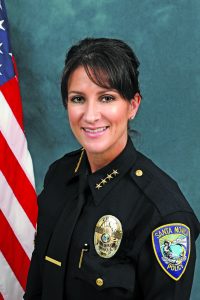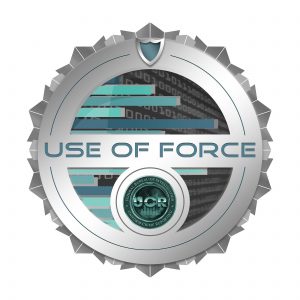Español Français Português عربى |

Every day, police agencies rely upon data to make tactical and operational decisions about how best to deploy resources and combat crime in their communities. These same data, when pulled together from police agencies on a global scale, can improve the understanding of police operations, inform public policy, and enhance crime prevention strategies.
Now, more than ever, it is essential that we work together to leverage data to tell our own story. Data will allow us to take back the narrative, and not let the media or others control the dialogue. With today’s conversation hyper-focused on police reform, we need data more than ever. We need that data to demonstrate to our communities that the image of police that is being presented right now largely misrepresents the profession and paints an inaccurate picture of what our officers do each day.
Much of the discussion around police reform stems from use of force and police tactics. It takes only one police use-of-force incident to be the lightening rod that garners the attention of the media and elected officials and that spreads at an alarming rate over social media, garnering worldwide attention and drawing criticism and scrutiny to the profession as a whole.
The challenge we collectively face is that these incidents are often presented to the public without the proper context and without providing the public with an understanding of how rare use-of-force incidents actually are. Unfortunately, as a profession, policing has let others take the lead on collecting these data, performing their own analysis and issuing their own conclusions. For example, in the United States, until recently, the largest databases on police use of force were maintained by media organizations and not law enforcement organizations or other governmental agencies. Without having the data on use-of-force incidents, we let others establish and maintain the narrative about police use of force. The IACP, federal law enforcement partners, and other law enforcement organizations and agencies realized that this was unacceptable, hindered the ability of the profession to address concerns and, as a result, was potentially harmful to community-police relations.
“Even when the topic is difficult, we have a responsibility to our communities to be as transparent as possible.”
To address this gap, in January 2019, the FBI, working with the IACP and others, launched the National Use-of-Force Data Collection. Through this effort, the FBI now collects use-of-force information from U.S. local, state, tribal, and federal law enforcement and investigative agencies in the first-ever national database on police use of force. The program is voluntary and thus relies on agencies submitting their use-of-force statistics. Don’t just think of this as a database for when incidents occur; it’s more than that. Its purpose is to shed light on the facts about these incidents, including how rare they are. To do this, we need every agency to participate. Arguably one of the most important things for agencies to submit is a report of zero incidents for each month in which they don’t experience a use-of-force incident.
According to the FBI, for the data collection’s inaugural year, 5,043 federal, state, local, and tribal law enforcement agencies submitted use-of-force data to the National Use-of-Force Data Collection for 2019. The agencies submitting 2019 data represented 41 percent of all federal, state, local, and tribal sworn officers. While the net data collection efforts are strong for the first year, we can and should be doing better at inputting these data as a profession.
Why is this effort so important?
One of our goals as police leaders is to tell the story of our agency and the hard work that our officers do every day, including use-of-force incidents. Even when the topic is difficult, we have a responsibility to our communities to be as transparent as possible.
Only through this national collection process will we be able to identify and understand trends associated with use-of-force incidents and ensure that all information is being accurately collected and tracked.
 Therefore, to assist our profession in telling its story, I am urging my fellow police leaders to submit their agencies’ data on use-of-force incidents to the national database. Significantly, even if your agency has not had a use-of-force incident during the reporting period, you should still submit a “zero report” so the public and our communities have the full picture of the use of force in the United States.
Therefore, to assist our profession in telling its story, I am urging my fellow police leaders to submit their agencies’ data on use-of-force incidents to the national database. Significantly, even if your agency has not had a use-of-force incident during the reporting period, you should still submit a “zero report” so the public and our communities have the full picture of the use of force in the United States.
This effort is vital to our profession, but it will work only if we all participate.


